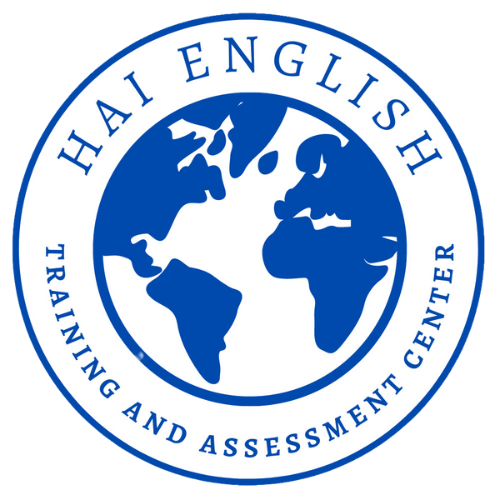How to Choose the Best Water Purification System for Your Family
Last summer, the Thompson family noticed their tap water tasted metallic and their kids complained of upset stomachs. Concerned, they tested their water and discovered high levels of lead and bacteria. This wake-up call pushed them to explore water purification systems, a solution to ensure safe, clean drinking water. Clean water is vital for family health, preventing illnesses and improving taste for daily use. Choosing the right system offers peace of mind and protects loved ones from contaminants. With so many options, the process can feel overwhelming, but it doesn’t have to be. Selecting the best water purifier purification system requires understanding your family’s needs and exploring available technologies. This article guides you through the steps to find a system that safeguards your household, ensuring every sip is safe and refreshing.
The Basics: What Is Water Purification?
Water purification is the process of removing contaminants—such as bacteria, chemicals, sediments, or heavy metals—from water to make it safe for drinking and cooking. Common technologies include reverse osmosis, which filters out dissolved solids; UV purification, which kills pathogens; carbon filters, which improve taste by removing chlorine; and distillation, which eliminates heavy metals through evaporation.
These systems address everyday concerns, like odd-tasting water or health risks from microbes, making them essential for families. A reliable water purifier purification system ensures water is not only safe but also pleasant to drink, enhancing hydration and cooking quality. For households, this means fewer worries about waterborne illnesses or long-term exposure to toxins like lead. By integrating water purification into daily life, families can protect their health and enjoy better-tasting water. Understanding these basics sets the foundation for choosing a system tailored to your home’s needs, ensuring both safety and satisfaction.
Read more: Home Improvement: Enhancing Your Living Space Through Renovation and Maintenance
Step 1: Know Your Water and Your Family
The Thompsons began their journey by testing their tap water, revealing lead and bacterial issues that explained their health concerns. To choose the right water purification system, start by assessing your water quality. Use home test kits, available online or at hardware stores, to check for contaminants like lead, chlorine, or nitrates. Alternatively, review your local water quality report, often provided by your utility company, to identify specific issues like hard water or microbial contamination.
Next, consider your family’s needs: a large household requires higher capacity systems, while small families may prioritize compact models. Factor in specific concerns, such as allergies to chemicals or sensitivity to hard water. Budget planning is crucial—while some systems have higher upfront costs, they offer long-term savings through durability and efficiency. For example, a $300 reverse osmosis system might save money compared to bottled water over time. Personalized water purifier purification begins with understanding your water’s unique profile and your family’s lifestyle. By investing time in this step, you’ll narrow down options and ensure the system you choose addresses your household’s specific water quality challenges effectively.
Read more: 7 Benefits of Drinking Water
Step 2: Exploring Water Purification Options
With test results in hand, the Thompsons researched water purifier purification systems to find the best fit. Here are the main options:
-
Reverse Osmosis (RO)
- How it works: Forces water through a semi-permeable membrane, removing dissolved solids like lead and arsenic.
- Pros: Highly effective for most contaminants; improves taste.
- Cons: Wastes some water during filtration; requires regular filter replacement.
- Best for: Families with heavy metal or chemical concerns.
-
UV Purifiers
- How it works: Uses ultraviolet light to kill bacteria and viruses.
- Pros: Excellent for microbial contamination; low maintenance.
- Cons: Doesn’t remove chemicals or sediments; needs electricity.
- Best for: Homes with well water or pathogen risks.
-
Carbon Filters
- How it works: Absorbs impurities like chlorine and volatile organic compounds (VOCs).
- Pros: Affordable, easy to install; enhances taste and odor.
- Cons: Less effective against heavy metals or microbes.
- Best for: City water with taste or odor issues.
-
Distillation
- How it works: Boils water and condenses vapor, leaving heavy metals and minerals behind.
- Pros: Removes a wide range of contaminants; reliable for hard water.
- Cons: Slow process; high energy use.
- Best for: Areas with high mineral content or complex contaminants.
When choosing, look for certifications like NSF or EPA, which ensure the system meets safety and performance standards. Compare costs—RO systems range from $200-$500, while carbon filters can cost under $100. Maintenance needs vary, with UV systems requiring annual bulb changes and RO needing filter replacements every 6-12 months. Selecting a water purification system involves weighing these pros and cons against your water quality results, ensuring the technology aligns with your family’s needs.
Step 3: Evaluating Features and Practical Considerations
The Thompsons narrowed their options by focusing on practical features that fit their busy lifestyle. When evaluating water purifier purification systems, consider these key factors:
- Contaminant Removal Specificity
- Ensure the system targets your water’s specific issues, like lead or bacteria.
- Check product specs or NSF certifications for verified contaminant removal.
- Flow Rate and Capacity
- Choose a system that matches your household size—large families need higher flow rates (e.g., 0.5-1 gallon per minute).
- Compact systems suit small households with lower water usage.
- Ease of Filter Replacement and Maintenance Costs
- Look for user-friendly designs with accessible filter changes.
- Compare maintenance costs—RO filters cost $50-$100 annually, while carbon filters are cheaper.
Practical tips include checking installation requirements: under-sink RO systems may need professional setup, while countertop carbon filters are DIY-friendly. Research brand reliability through customer reviews on platforms like Amazon or Home Depot to avoid systems prone to leaks or malfunctions. Long-term performance hinges on regular maintenance, like replacing filters on schedule or cleaning UV bulbs, to ensure consistent water quality. For the Thompsons, a high-capacity RO system with easy filter access suited their large family and lead concerns. Smart evaluation optimizes water purification performance, ensuring the system you choose is both effective and practical for daily use. By prioritizing features that align with your household’s needs, you’ll invest in a system that delivers clean water effortlessly.
Step 4: Making the Final Choice and Beyond
After comparing options, the Thompsons chose a reverse osmosis system, confident it addressed their lead and taste issues. To make your final water purifier purification decision, balance features, budget, and water quality needs. Prioritize systems with verified contaminant removal and suitable capacity for your family. Consider total costs, including maintenance, to avoid surprises. For installation, decide between DIY (common for carbon filters) or professional setup (often needed for RO or UV systems). Once installed, follow maintenance schedules—replace filters as recommended and clean components to maintain performance. Periodically test purified water with home kits to confirm the system’s effectiveness over time.
The Thompsons now enjoy clean, great-tasting water, and their kids’ health issues have resolved. A well-chosen water purification system delivers lasting benefits, from safer drinking water to peace of mind. By carefully selecting and maintaining your system, you ensure consistent quality, protecting your family for years to come.
Closing Reflection: A Healthier Future with Clean Water
The Thompsons’ new purification system transformed their daily life, delivering clean water and confidence in their family’s health. Clean water is essential for well-being, preventing illnesses and enhancing quality of life. Investing in a water purification system is a proactive step toward a healthier future. Start by testing your water and researching options to find the best fit. Every family deserves safe, great-tasting water. Take action today—explore water purifier purification systems to protect your household. Your family’s health is worth it, and the right system will deliver lasting peace of mind.
Read more: Eco-Friendly House Decoration: A Guide to Sustainable and Stylish Living
DEALS DELIVERED TO YOUR INBOX.
Subscribe now for top-notch shopping & Investing advice. Receive hot Vouchers into your wallet
By submitting your information you agree to the Terms & Conditions and Privacy Policy
Related Articles

Sustainable Shopping: Eco-Friendly Products and Deals for 2025

Perinton Pizza Emporium Coupons: How to Save on Your Next Slice!

Top AI Subscriptions with the Best Discount Codes in 2024

Comparison: LinkedIn Learning vs. Coursera Discounts

How to Bid on Large-Scale Printing Projects Effectively

10 Vintage Lace Wedding Invitation Ideas That Weave Timeless Romance into Every Detail
Popular Brands
View all
Make More Birdies
6 Coupons Available
Meditationtrainingonline.com
5 Coupons Available

Haienglish.net
5 Coupons Available

Agencys.ai
5 Coupons Available

The SIBO Doctor
5 Coupons Available

Addy AI
5 Coupons Available
Popular Articles
View all
New Wave Makeup: Revolutionary Ideas to Break Beauty Boundaries

Batik Meets Bold: How Modern Men Are Redefining Formalwear with the Batik Blazer

Winter Coats Women Shearling: Top 10 Ideas for a Chic and Cozy Winter Style

Top 10 Ideas for Aesthetic Cardigan Outfits to Elevate Your Style
.png)
Navigating the Risks of Health Insurance: What You Need to Know

Unveil Your Stunning Bridal Look: Top 10 Plunging Neckline Wedding Gowns
LATEST

Last updated: Sep 3, 2025

Last updated: May 5, 2025
.png)
Last updated: Jun 2, 2025

Last updated: Dec 17, 2025

Last updated: Sep 16, 2025

Last updated: Jun 21, 2025
